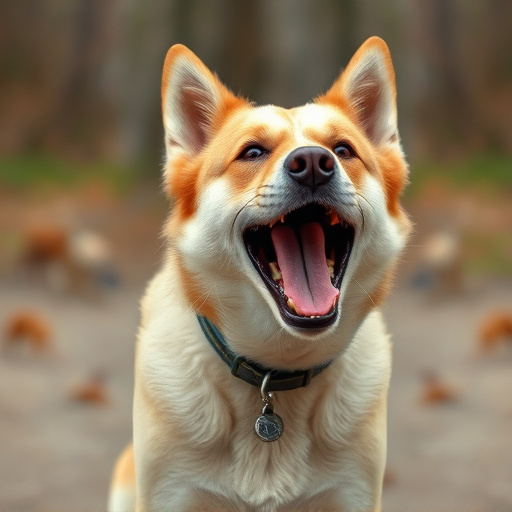Dog aggression requires understanding triggers like fear and past trauma before considering deterrents like pepper spray. When using pepper spray, opt for washable formulas designed for canine fur to maximize irritation in sensitive areas. Always wash pepper spray residue off the dog's fur with shampoo and warm water after use to ensure safety and comfort. In case of a dog attack, effectively removing pepper spray residue by rinsing with warm water and mild, dog-safe shampoo is crucial first aid.
“Curious about how to protect yourself and your pets from dog attacks? Discover the power of pepper spray as a safe and effective deterrent. This comprehensive guide delves into understanding canine aggression and the latest in non-lethal self-defense tools. Learn how washable dog pepper spray can be applied, ensuring both safety and ease of use. Additionally, explore vital techniques to effectively remove the spray from your dog’s fur post-incident. By arming yourself with this knowledge, you’ll navigate potentially dangerous situations with confidence.”
- Understanding Dog Aggression and Pepper Spray Safety
- Choosing and Applying Washable Dog Pepper Spray
- Effective Techniques to Remove Pepper Spray from Dog Fur
Understanding Dog Aggression and Pepper Spray Safety
Dog aggression can stem from various factors, such as fear, territorial behavior, or past trauma. Understanding these triggers is crucial when considering prevention methods like pepper spray. However, it’s essential to use pepper spray as a last resort and know how to safely deploy it.
When using pepper spray on an aggressive dog, the first step is to ensure your safety. Wash the pepper spray off the dog’s fur immediately after application to prevent further irritation or respiratory distress. Proper usage involves targeting the dog’s face while maintaining a safe distance, but always be prepared for unpredictable behavior and have a plan to retreat if needed.
Choosing and Applying Washable Dog Pepper Spray
When considering a stop dog attack pepper spray, one of the key factors is choosing a washable option designed specifically for canine fur. Traditional pepper sprays may not effectively adhere to or irritate a dog’s eyes and skin due to their water-repellent nature. Washable dog pepper spray, on the other hand, is formulated to bond with the dog’s fur, ensuring maximum contact with sensitive areas.
Applying this type of spray requires careful consideration. Always read and follow safety instructions provided by the manufacturer. Target specific areas like the face, nose, and eyes, where irritation will quickly prompt a dog to stop attacking or retreat. After application, promptly wash the pepper spray off your dog’s fur using a gentle shampoo and warm water to remove any residue, ensuring your pet is safe and comfortable post-incident.
Effective Techniques to Remove Pepper Spray from Dog Fur
In the event of a dog attack, one of the most immediate concerns is managing the situation to prevent further harm. A crucial step in this process is effectively removing pepper spray residue from the affected dog’s fur. The wash Pepper Spray off Dog Fur technique is a vital first aid measure that can significantly alleviate discomfort and reduce potential long-term effects.
Start by rinsing the dog’s fur with warm water, ensuring thorough coverage of the sprayed areas. This initial rinse helps to dilute the pepper spray, making it easier to remove. Follow up with a mild, dog-safe shampoo to create a lather and gently scrub the fur. Focus on affected areas, massaging the shampoo into the coat to dislodge any remaining pepper spray particles. Rinse again thoroughly with warm water until all residue is eliminated, ensuring no irritants remain on the dog’s skin.
In understanding dog aggression and ensuring your safety, knowing how to apply washable dog pepper spray is a valuable skill. When used responsibly, this can be an effective deterrent. Remember, proper application and quick action are key, especially when aiming to wash the pepper spray off your dog’s fur afterward. Always prioritize your well-being and your pet’s comfort during such situations.
